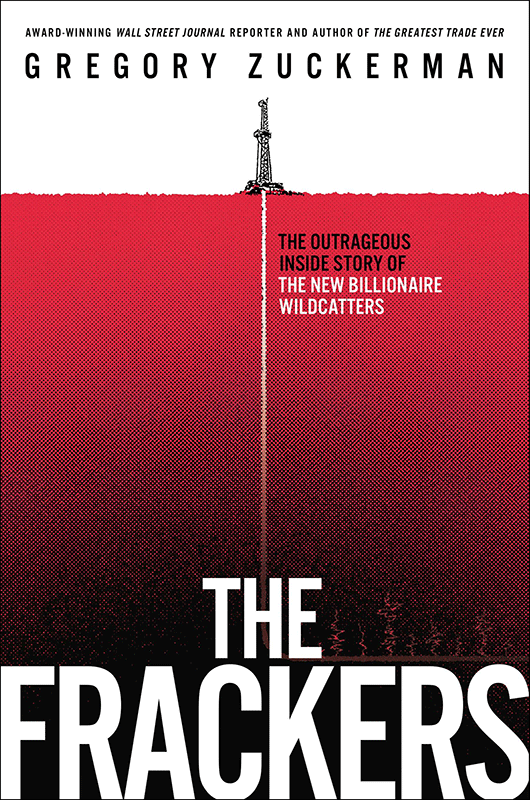This is the book of our time, the story of the US shale energy revolution, told through the lives of the ‘part gamblers, part salesmen, part geologists’ who were at the cutting edge. For once, the term ‘roller-coaster’ seems completely appropriate, perhaps even a little tame. By following the personal fortunes of the key players – George Mitchell, Harold Hamm, Aubrey McClendon, Charif Souki et al. – Wall Street journalist Gregory Zuckerman tells the story not just of technical innovation but of the dangers of being in the oil and gas vanguard, the blindness of the participants to the trends they were creating and the consequent jaw-dropping fortunes made and, in some cases, lost.
The technical story is the backdrop. Zuckerman gives clear layman accounts of the geological challenges and the extraordinary coming together of a variety of technical innovations. It was Bob Hauptfuhrer of Oryx Energy who pioneered horizontal drilling in the late ’80s, realising that improvements in computer imaging and seismic analysis made the increased outlay justifiable; Harold Hamm, the ‘genial dreamer’ who, along with his team, realised the value of combining horizontal drilling and fracking; George Mitchell and his key geologist Kent Bowker who, below the radar of the company’s president, continued to experiment with fracking gel, discovering that ‘less was more’ for the ‘secret sauce’; and Hamm at Continental Resources who perfected the formula of multi-stage fracking that allows the closing off of sections and the prolonging of well life.
 The blindness of the super-majors to the potential of shale has been well documented elsewhere – embarrassingly, ExxonMobil’s Irving headquarters are directly above the huge Barnett Formation. But, as Zuckerman expertly details, the individuals driving the revolution – the drillers and the money men – were also blind to the gas glut they were creating. In the 1990s, when oil and gas prices were low, adventurers such as Aubrey McClendon and Tom Ward of Chesapeake went through ‘near death on a daily basis’ to acquire more and more land. By the early 2000s it was as if they were playing the board game Risk, using their highly valued and incentivised landsmen – and $5.5bn of debt – to become the ‘Bill Gates of energy’. As late as March 2008 the consensus was still that the world was running out of oil and gas: few realised at the time that upward prices were maintained partly by Ward and McClendon operating their own hedge fund and effectively being ten per cent of market activity.
The blindness of the super-majors to the potential of shale has been well documented elsewhere – embarrassingly, ExxonMobil’s Irving headquarters are directly above the huge Barnett Formation. But, as Zuckerman expertly details, the individuals driving the revolution – the drillers and the money men – were also blind to the gas glut they were creating. In the 1990s, when oil and gas prices were low, adventurers such as Aubrey McClendon and Tom Ward of Chesapeake went through ‘near death on a daily basis’ to acquire more and more land. By the early 2000s it was as if they were playing the board game Risk, using their highly valued and incentivised landsmen – and $5.5bn of debt – to become the ‘Bill Gates of energy’. As late as March 2008 the consensus was still that the world was running out of oil and gas: few realised at the time that upward prices were maintained partly by Ward and McClendon operating their own hedge fund and effectively being ten per cent of market activity.
Prices Tumble
With the subprime crisis came the ‘look down’ moment when McClendon realised that Chesapeake’s own production could break the gas market – land was ‘held by production’, meaning they had no choice but to actively develop what they had acquired, sending prices down. Still, like addicts, McClendon and Ward continued to buy. The eventual, inevitable, January 2013 boardroom coup against McClendon was precipitated by a build-up of short-sellers, environmental catastrophes, law suits and, according to one investor, the ‘near perfect illustration of the complete collapse of appropriate corporate governance’. This is the story of the American dream, super-charged by easy credit, finally caught short by market fundamentals.
Similar humiliation was only narrowly avoided by Charif Souki, the entrepreneur behind the LNG plant at Cheniere in Louisiana. In fact, in 2014, at the time of the Ukraine crisis, he has become the hero of the hour, the first to be in a position to start exporting US shale gas in 2015. As Zuckerman details, that is not how the dream started. As with McClendon and Ward, Souki bet on a shortfall of gas and spent seven years planning a major import facility, boosted at the crucial moment in 2003 by Alan Greenspan’s now famous announcement that the US would require a major expansion of import capacity. Souki spent seven years raising the finance, finding the location and negotiating import deals with Total and Shell – only to be encumbered by debt, downgraded to junk status in 2007 and the target of short-sellers. By late 2008 the whole idea of importing seemed preposterous and Souki faced ruin and derision – or the challenge of raising another $12bn and converting Cheniere into an export facility. He took the latter – even though he still did not actually have permission to build and an export licence came only in 2011!
The Frackers is, in the end, an analysis of the bizarre state of capitalism in the early 21st century, where credit can become debt in the flick of an eye and the best minds available are not able to see tides turning or cliff edges coming. Zuckerman tells the story of winners and losers with verve and detail. This is a must-read for anyone who follows financial and energy markets but it should come with a health warning: definitely not for the faint-hearted.





